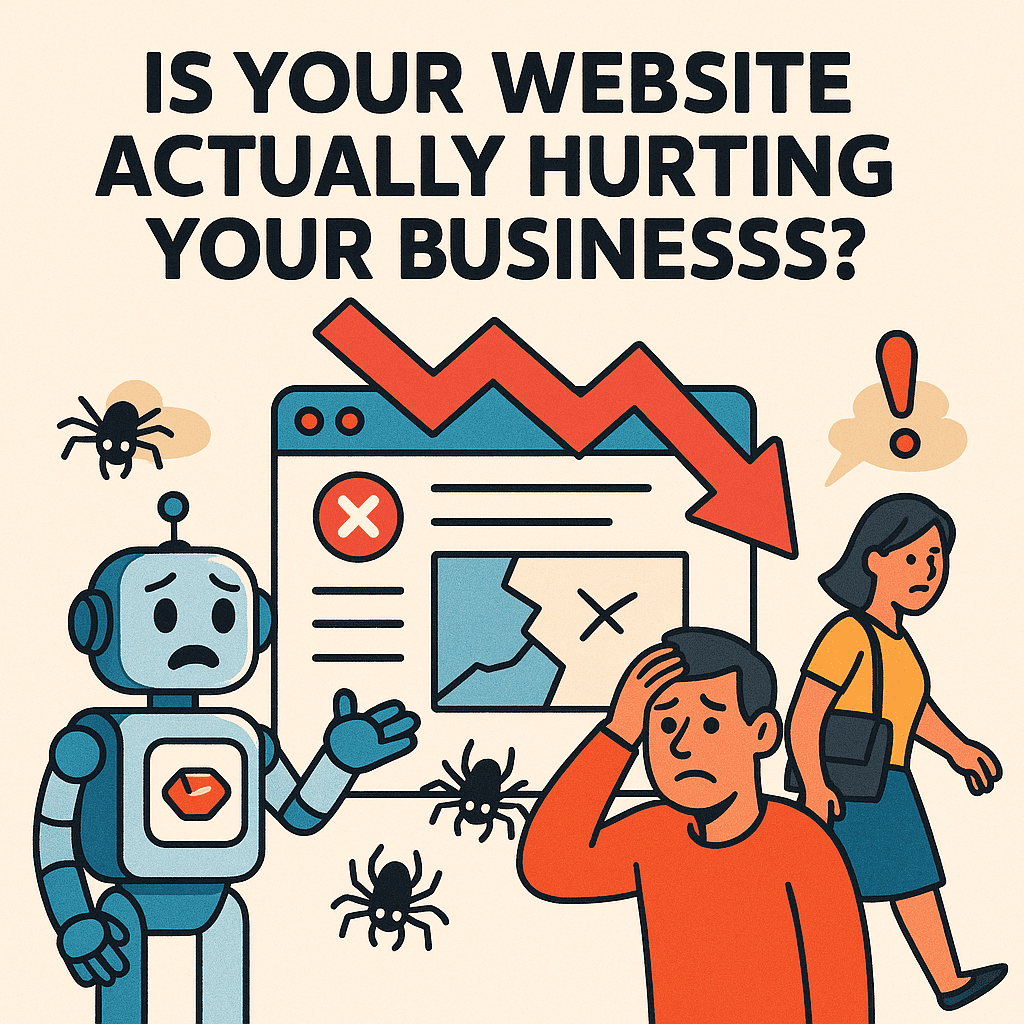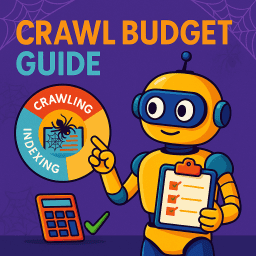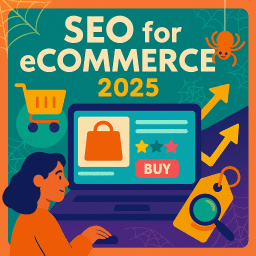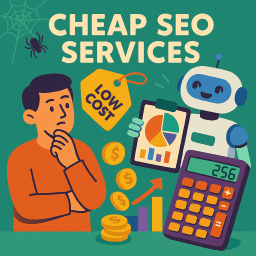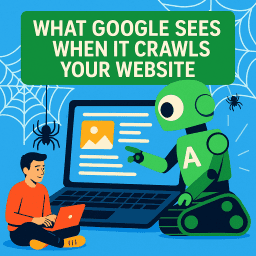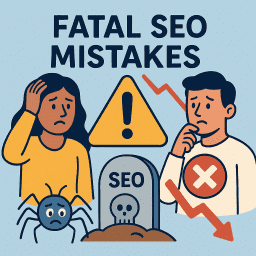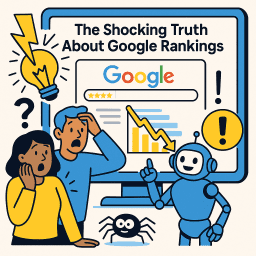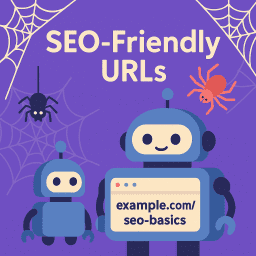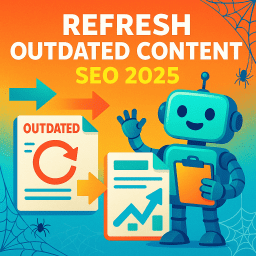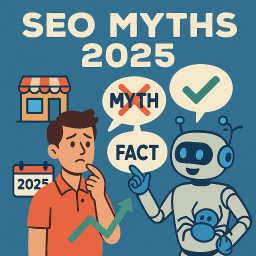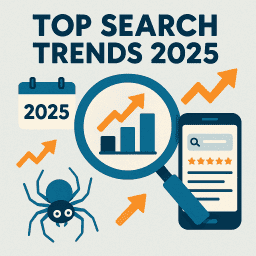Is Your Website Damaging Your Business? What to look out for
Warning signs your site is costing you sales
🎯 Stop Losing Business: Fix These Website Mistakes Now
Your website should be your best salesperson – working 24/7, generating leads, and building trust. But what if it’s doing the opposite? What if your website is hurting your business?
Most business owners assume that simply having a website is enough. But in reality, a poor website can quietly kill your credibility, frustrate visitors, and cost you real money every single day.
If you’ve ever wondered why leads are drying up, bounce rates are sky-high, or you just have that gut feeling something isn’t right – this post is for you.
🚩 1. Your Website Looks Outdated
First impressions matter. If your site looks like it was built in 2009, visitors might assume your business is outdated too. Design trends change fast, and today’s users expect sleek, responsive, and mobile-friendly experiences.
Ask yourself:
- 📆 Is your site more than 5 years old without a redesign?
- 📱 Does it display poorly on smartphones or tablets?
- 🧱 Is it cluttered, slow, or difficult to navigate?
Perception is powerful – and trust is often lost in seconds.
🐢 2. It’s Slow (and Google Hates That)
Speed isn’t just a nice-to-have. It directly affects your Google rankings, bounce rate, and conversions. Users expect a site to load in under 2 seconds – anything more and they’re likely to leave.
Test your site using PageSpeed Insights or GTmetrix. If you’re seeing red, your site is probably costing you traffic and trust.
Common culprits:
- 🖼️ Unoptimised images
- 🧩 Bloated plugins or code
- 🕸️ Cheap, overcrowded hosting
🔍 3. No One Can Find You on Google
Your website might look good – but what if no one’s visiting it?
If you’re not showing up for relevant search terms, your competitors are getting your traffic. And that’s a problem.
This could be caused by:
- 🔑 Poor keyword targeting
- 🔗 No SEO strategy or backlink profile
- ⚙️ Missing basics like meta titles, descriptions or alt tags
Use Google Search Console to check your visibility. If impressions are low or flatlining – it’s time for action.
💔 4. Visitors Aren’t Doing Anything
You’re getting traffic – but no one’s calling, buying, or enquiring. That’s a classic sign of poor conversion design.
What to look for:
- 🧭 No clear call-to-action (CTA) on key pages
- ❓ Confusing navigation or too many choices
- 📉 Weak messaging or unclear benefits
Every page should have a purpose. If users aren’t taking action, your site might be more like a brochure than a business tool.
📉 5. Bounce Rates Are Sky-High
When people land on your site and immediately leave, something’s wrong.
Check your bounce rate in Google Analytics. Anything over 70% is a red flag (unless you run a blog).
Common causes include:
- 🎨 Poor design or layout
- ⚡ Slow loading speeds
- 📄 Irrelevant content or keyword mismatch
Users decide in seconds whether to stay or go. Make those seconds count.
🧊 6. Your Content Is Cold and Generic
Is your site packed with bland “corporate speak” or recycled clichés? Today’s users want human, helpful, and authentic content.
Ask yourself:
- 🗣️ Does your content sound like you or a robot?
- 🤝 Is it written for your audience – or for you?
- 📚 Does it actually answer real customer questions?
Great content builds trust. Weak content builds… exits.
📱 7. It’s Not Mobile-Friendly
Over 60% of website traffic is mobile. If your site isn’t responsive, fast, and easy to use on a phone – you’re losing half your audience before they even begin.
Use Google’s Mobile-Friendly Test to see how your site performs. Then browse your own site on a phone – would you stick around?
🔒 8. It Feels Untrustworthy
Even subtle issues can destroy credibility:
- ❌ No SSL certificate (no padlock in browser)
- 🖋️ Outdated blog posts or broken links
- 📬 No clear contact information
Your website is often your first impression. Make it count.
🧠 Final Thoughts: Is It Time for a Website Audit?
If any of these issues sound familiar, it doesn’t mean your site is doomed – it means there’s an opportunity to improve.
Sometimes, a small tweak (like speeding up your homepage or rewriting your CTA) can make a big difference. Other times, a full redesign is the best investment you’ll ever make.
Your website isn’t just a digital business card. It’s your online storefront, your sales engine, and your trust builder.
If it’s not helping your business grow, it might be time to ask the hard question: is it actually holding you back?
🔗 Related Resources from The SEO Guide Book
- If you’re completely new to search engine optimisation, our SEO Basics guide is a great place to start.
- Fixing issues like missing title tags or slow site speed? Check out our On-Page SEO guide for a full breakdown.
- Technical issues can silently hold your site back — our Technical SEO page covers the essentials.
- Not ready to hire an expert? Our DIY SEO guide will walk you through the steps.
- Want to make sure you’ve covered the basics? Download our Free SEO Checklist and follow along.
📝 Recap and Clarify: Post-Specific FAQs
Can a poorly designed website hurt my business?
Yes. A slow, confusing, or outdated website can damage your credibility, drive away potential customers, and reduce conversions—even if your products or services are great.
What are signs that my website is underperforming?
High bounce rates, low dwell time, poor mobile usability, slow page speed, and lack of enquiries or conversions are all warning signs your site might be hurting your business.
Does website speed affect user trust?
Absolutely. Users expect pages to load in under 2 seconds. A slow website creates frustration and can instantly reduce trust and brand perception.
Why is mobile optimisation essential for my website?
Over half of web traffic comes from mobile. A site that isn’t mobile-friendly frustrates users and ranks poorly in Google’s mobile-first indexing system.
How does poor UX affect SEO and business results?
Poor user experience leads to lower engagement, higher bounce rates, and reduced conversions. Search engines also use UX signals when determining rankings.
Should I redesign my website if it looks outdated?
Yes. A dated design can make your business look unprofessional. A modern, responsive website builds trust, improves performance, and supports better marketing outcomes.
How do I know if my website is costing me customers?
If you’re getting traffic but not enquiries or sales, your site may be turning people off. Analytics tools can help you identify where users drop off or lose interest.
Does outdated content hurt my website’s SEO?
Yes. Outdated content can lower your credibility and visibility. Google favours fresh, relevant information that meets current user expectations and search intent.
Can poor website structure affect Google rankings?
Yes. A messy site structure can confuse both users and search engines, making it harder to index and rank your content effectively.
What’s the first step to fixing a bad website?
Start with a full audit—covering design, speed, UX, SEO, and mobile responsiveness. From there, create a prioritised action plan for improvements or a full redesign if needed.


